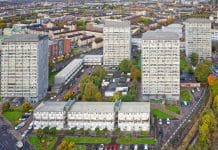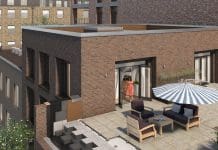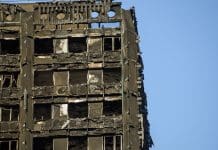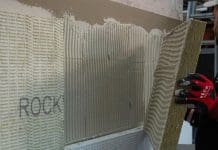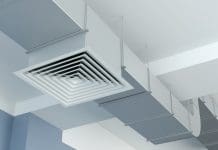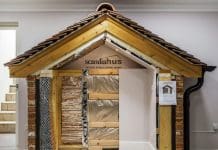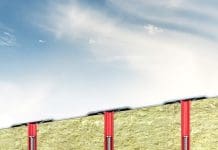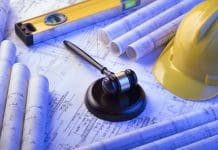With cladding under the spotlight, Paul Valentine, Technical Excellence Director at the British Board of Agrément, discusses the factors behind external wall insulation failures and how they can be addressed
External wall insulation systems (EWIS) are widely used to retrofit homes and high-rise buildings, improving their thermal performance, reducing energy bills and cutting carbon emissions. However, despite these benefits, there have been a number of cases of EWIS suffering defects. These defects can range from relatively minor, such as cold bridges or condensation issues, to in the most serious cases structural failure of the system, which can result in a loss of support to the components of the EWIS. In the case of tall buildings, the potential dangers of these materials falling off are obvious.
For over 50 years, the British Board of Agrément has led the way in the testing and certification of construction products.
Paul Valentine, the BBA’s Technical Excellence Director and a structural engineer by profession, explains: “EWIS products in and of themselves are not inherently unsafe. A large number of defects can be attributed to poor installation.
“A common example of inappropriate installation methods is the use of a mineral insulant with mast climbers to face the building top to bottom, and then rendering from the bottom up. You could be doing this in harsh winter conditions, with mineral wool exposed to rain and particle deposition on the surface.
“It’s no surprise that when you finally come to render, maybe two or three weeks later, the mineral wool is saturated and consequently the render bond will not form.
“That’s not product failure because if you did it in the right conditions, it would be adequate. There’s a misunderstanding about how sensitive these systems are to construction processes.”
Previous research by the BBA found a widespread lack of knowledge in the industry about the safe installation of EWIS. This “knowledge deficit” stems from the fact that current guidance does not cover the structural design of EWIS systems and there is no recognised design standard.
Paul: “The key to recognising that design guidance and standards are needed is to recognise that there is a performance that is attributed to these EWIS that extends beyond thermal performance. I’m not entirely sure that this has been recognised until recently.”
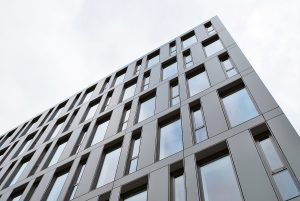 High-profile cases of cladding failure, not least the Grenfell Tower fire, have put the spotlight on external insulation. In December 2017, DCLG issued Advice Note 13 on External Wall Insulation Systems with render or back slip finish.
High-profile cases of cladding failure, not least the Grenfell Tower fire, have put the spotlight on external insulation. In December 2017, DCLG issued Advice Note 13 on External Wall Insulation Systems with render or back slip finish.
Paul: “A prominent step forward for me was when DCLG acknowledged that these systems are covered under Part A of the Building Regulations within this guidance note.
“In fact, in the Approved Documents, Part A Section 3 covers cladding. It doesn’t say too much but it makes it very clear that if you are putting EWIS on your building, you need to make sure that it is meeting the requirements of Part A.”
Yet, despite EWIS being covered by Part A, the industry still lacks a uniform design standard – the BBA is compensating to a degree by providing key information in BBA certificates.
Paul: “I would hope that over the next few years, one of the targets is to be able to get the manufacturers’ associations and industry together with people like myself at the BBA and government to develop some form of consistent design guidance on this.”
In the meantime, BBA inspection and certification provides independent scrutiny of EWIS products, needed to ensure these systems are safe and compliant with Part A of the Building Regulations.
Paul: “Within our new BBA certificates, we set down our opinion of what constitutes a safe design. We’ve applied partial factors in accordance with good structural engineering practice and limit state principles.
“Our surveillance of factory production control under BBA Certification gives confidence that BBA Certified Systems are manufactured to a high standard. As far as I’m aware, at present it is not mandatory for systems to be installed by an approved installer – now that would clearly be a good step forward.”
Paul Valentine
Technical Excellence Director
British Board of Agrément
Tel: +44 (0)1923 665300
Twitter: @BBAGURU
Please note: this is a commercial profile.




